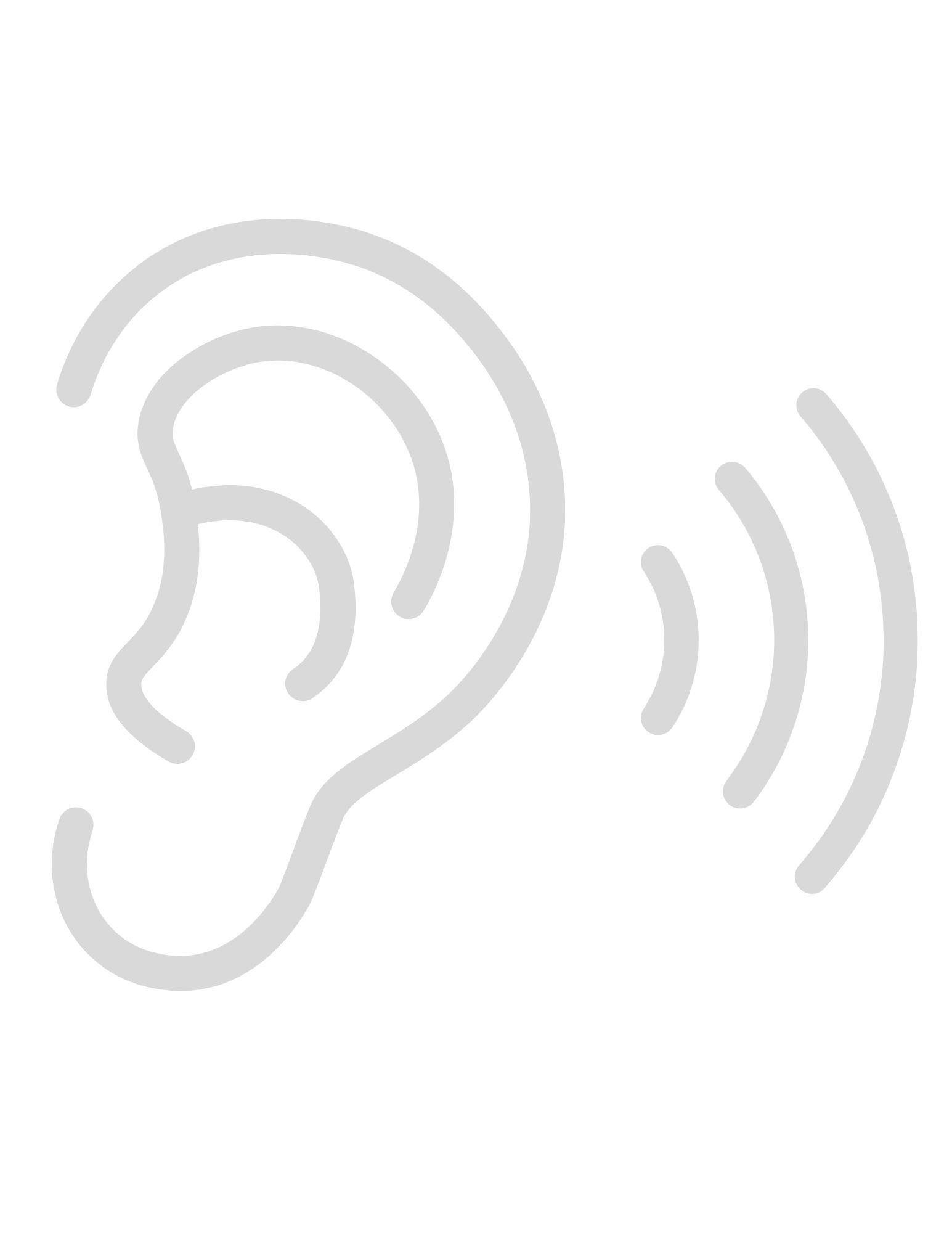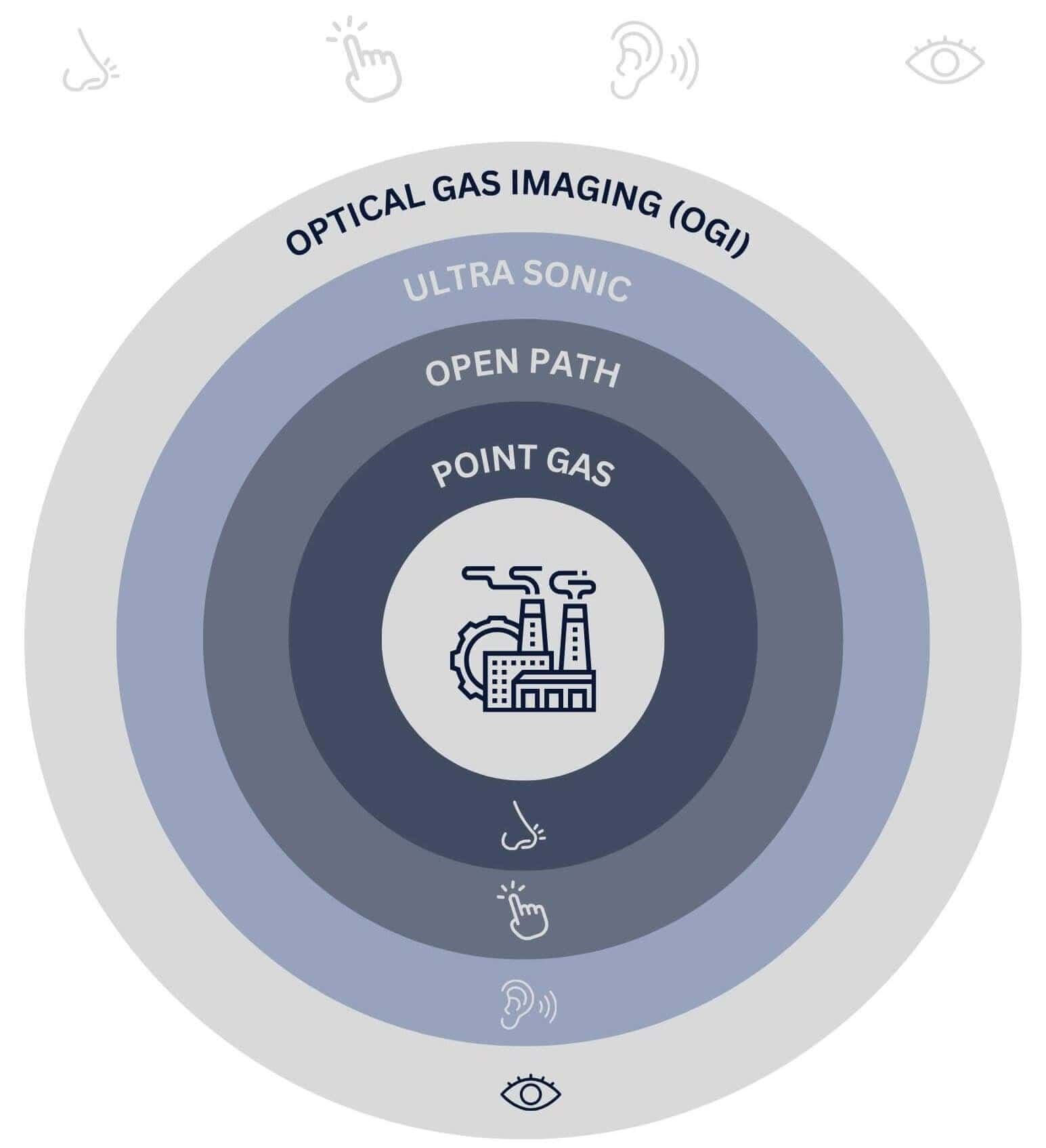Methane leaks within a facility present a notable risk to individuals, assets, and the environment, potentially incurring substantial costs if not promptly addressed. Detecting leaks in a timely manner is essential to prevent them from evolving into hazardous situations.
The critical consideration lies in whether we are deploying the most effective gas detection methods. Adopting a layered approach or utilizing the four senses--smell, touch, sound, and sight--in gas detection can provide an optimal level of protection and detection capability.

 Smell
Smell
Conventional point gas detection serves as the initial line of defense for identifying hazardous methane leaks. Regulatory requirements mandate the placement of these detectors throughout the plant in hazardous areas to detect methane leaks. These detectors operate by relying on gas to flow over the sensor, essentially "sniffing" the air. Once a leak is detected through this olfactory method, the detector triggers an alarm to notify the operator. While this method is effective, it has its limitations. The detector's efficiency depends on the gas passing over the sensor, and suboptimal placement or external factors like wind and irregular bump testing can lead to the detector overlooking critical leaks.
 Touch
Touch
Incorporating an open-path gas detector alongside traditional point detection enhances the likelihood of detecting a gas leak. The touch-based detection method employed by open-path detectors relies on the gas cloud physically interacting with the beam connecting the transmitter and the receiver. Strategically placing these detectors throughout the plant aids in containing and identifying the specific locations of methane leaks. Nevertheless, this detection method is sensitive to factors like optimal positioning, calibration, and environmental conditions such as wind. If the gas fails to make contact with the beam, the unit will not trigger an alert for the leak.
 Sound
Sound
Ultrasonic gas detectors are employed in conjunction with the aforementioned methods to detect pressurized leaks. The sensors within ultrasonic detectors trigger alerts when escaping gas generates ultrasonic frequencies or produces sounds beyond the range of normal human hearing. However, similar to the two methods mentioned earlier, ultrasonic detectors have their limitations. Since these detectors operate within the realm of ultrasonic frequencies, they may detect any sound within this range, such as helicopter noise. Additionally, as ultrasonic detectors specifically listen for high-pressure leaks, they might overlook leaks that do not emit ultrasonic frequencies.
 Sight
Sight
Fixed Optical Gas Imaging (OGI) represents the cutting-edge technology in gas detection. Programmed to visually identify leaks, fixed OGI detectors, upon detecting a leak within their field of view, promptly record, alert, and transmit a video to the operator. This video furnishes critical information for making rapid decisions regarding the concentration, volume, and direction of the gas cloud. Similar to the previously mentioned technologies, these fixed systems operate continuously, ensuring the fastest response possible. OGI units typically offer a broad field of view, monitoring the entire area, which often reduces the number of detectors required and enhances cost efficiency.
OGI sensitivity is influenced by the changing environmental conditions in the site and may decrease when conditions worsen. In this, it differs from the other mentioned methods.
To sum up the discussion, the thorough examination of gas detection methods underscores the significance of adopting a layered approach or employing all four senses—smell, touch, sound, and sight—to effectively detect, identify, and safeguard individuals, assets, and the environment. The integration of these diverse methods not only enhances the overall level of protection but also mitigates the limitations associated with individual techniques, providing a comprehensive and proactive strategy for managing methane leaks in industrial settings.
